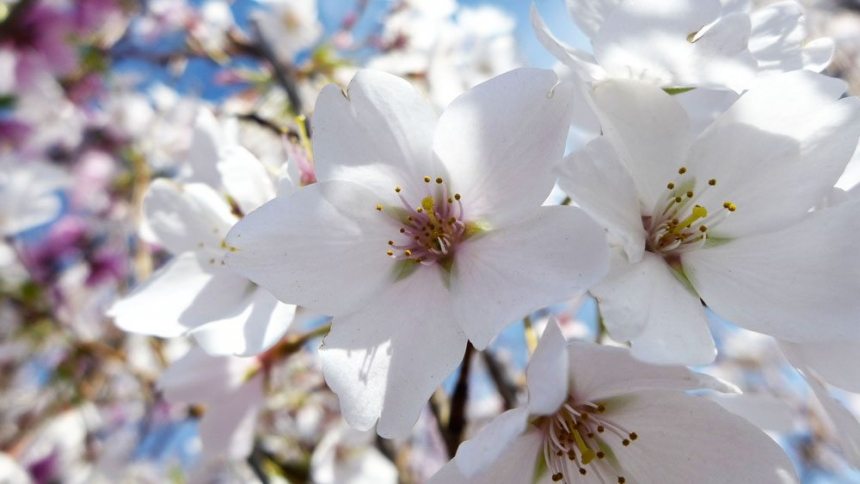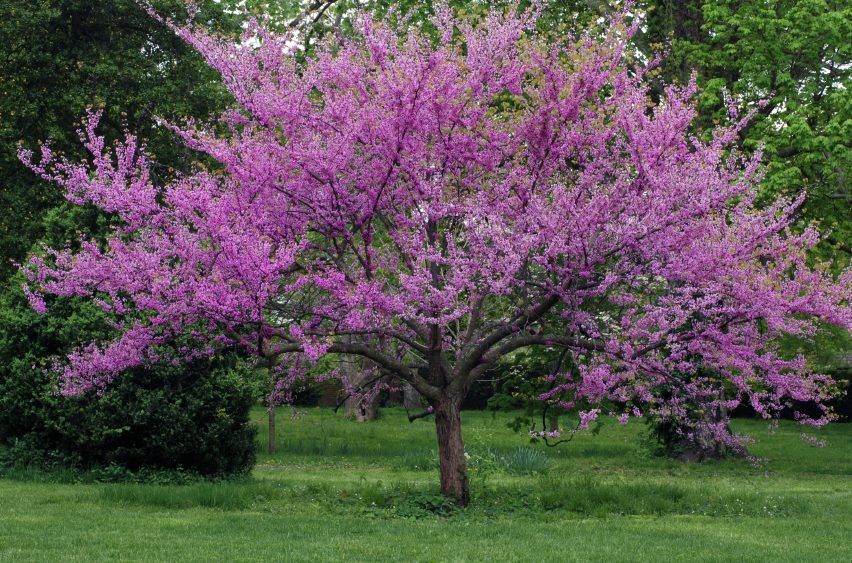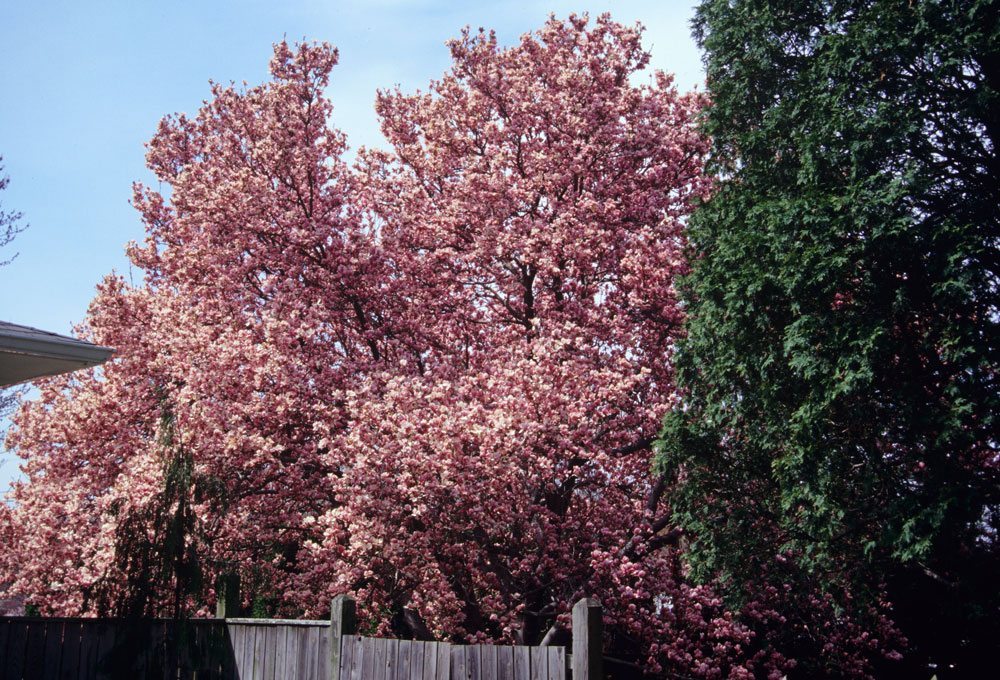Great Spring Flowering Trees
With our climate, we’re fortunate to have the option of planting many different types of trees.
We carry about 100 different types of spring flowering trees at Merrifield Garden Center. Here are some of our most popular varieties:
Flowering Cherries
A hybrid of the Japanese flowering cherry, Yoshino cherry is the stunningly beautiful tree that blooms during the National Cherry Blossom Festival around the Tidal Basin in Washington, D.C. The profuse blooming of these trees creates a soft pink cloud of color, drawing millions of visitors from around the world.
With its prolific, large double pink flowers, ‘Kwanzan’ is another extremely popular variety.
Weeping Higan cherry is frequently used as a specimen tree in the landscape. The arching branches gracefully hang to the ground, creating a spectacular form. It blooms in early spring with very pale pink flowers. And there is a variety with deep pink, double flowers.
‘Autumnalis’ is known for its two seasons of bloom – prolific pink blooms in early spring followed by sporadic flowering in the fall.
‘Okame’ is the earliest blooming and the deepest pink of the Japanese cherries. It also has a darker bark and a more rounded, slightly smaller mature shape than the other cherries.
Serviceberry
With several species native to North America, serviceberry blooms just before dogwoods with beautiful clusters of white flowers in early spring. Its fruit, which ripens to a blue color in June, is a big attractor to birds. In the fall, the leaves turn a gorgeous yellow to red color. Some of our most popular varieties are ‘Autumn Brilliance’ and ‘Cumulus.’
Redbud
Redbud is a native tree that is best known for its small clusters of magenta-pink flowers that bloom in late March to early April.
After blooming, heart-shaped leaves emerge and turn a light yellow in fall. ‘Forest Pansy’ is a variety with purple / maroon leaves that fade to dark green in late summer.
‘Covey’ and ‘Traveller’ are two popular weeping varieties. The combination of their dramatic shape and the deep color of their flowers make these two new varieties quite stunning. Other in-demand weeping varieties are ‘Ruby Falls,’ which have a purple leaf, and ‘Pink Heartbreaker,’ which have bright pink flowers.
Magnolias
There are many wonderful varieties of deciduous, spring flowering magnolias with beautiful blooms of purple, pink, white and yellow. Here are a few to consider:
Perhaps the most dramatic of all early blooming trees, saucer magnolia produces large flowers in brilliant shades of pink in March to early April.
Prized for its delicate, satiny white petals that are sculpted like stars, the star magnolia unveils its magnificent, slightly fragrant flowers in early spring. ‘Royal Star’ is a popular cultivar that blooms just after the saucer magnolia. Frost damage is rare since this is a later blooming tree.
The Girl Magnolias were hybridized by the U.S. National Arboretum and are an excellent choice for smaller gardens. They bloom a little later than the star magnolia, which reduces the chance of frost damage and delivers a beautiful display of color in April. ‘Betty,’ ‘Ann’ and ‘Jane’ are popular varieties.
‘Daybreak’ and ‘Galaxy’ boast enormous, colorful flowers and bloom later than other deciduous magnolias.
A Southern favorite, Sweet Bay magnolia delivers a creamy, white flower with a delightful lemon fragrance in early June. In our area, this small tree drops most of its leaves over the winter, although the ‘Henry Hicks’ variety retains about 25% of its leaves. Sweet Bay magnolia, a native, grows best in normal soil with sun or part shade, but it also tolerates swampy conditions. ‘Green Shadow’ is a bit more evergreen.
Dogwoods
Dogwoods also are a beautiful and popular spring flowering tree. Our dogwoods blog goes into more detail about Virginia’s state tree.





